Late to the Party: Crash Bandicoot 4: It’s About Time
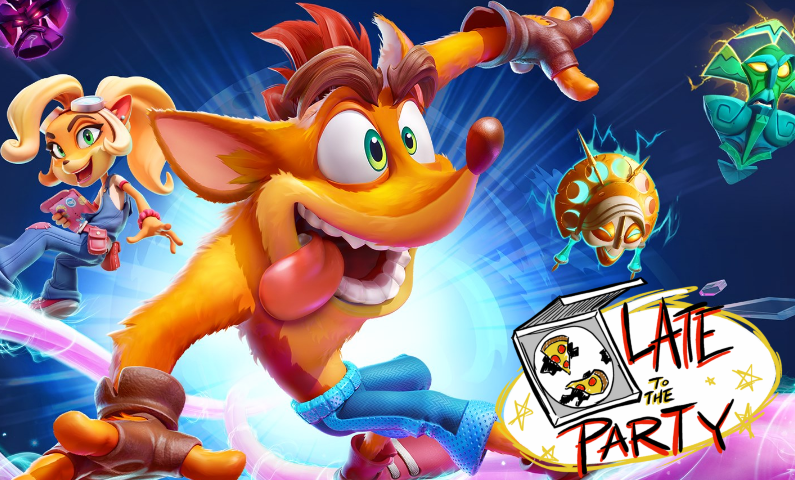
 ow that the character is over 24 years old, Crash Bandicoot has amassed a generation of fans that look at him with the same reverence as Super Mario and Sonic the Hedgehog—he’s a household name among Generation Z. On that token though, beyond the remastered releases and cameos, just how relevant is the property today’s gaming climate? Ironically enough, one of the biggest attractions the marsupial had over its competition was its sense of exclusivity, both in terms of gameplay difficulty and the platform brand the property wore heartily on its sleeve.
ow that the character is over 24 years old, Crash Bandicoot has amassed a generation of fans that look at him with the same reverence as Super Mario and Sonic the Hedgehog—he’s a household name among Generation Z. On that token though, beyond the remastered releases and cameos, just how relevant is the property today’s gaming climate? Ironically enough, one of the biggest attractions the marsupial had over its competition was its sense of exclusivity, both in terms of gameplay difficulty and the platform brand the property wore heartily on its sleeve.
Interestingly, the Crash Bandicoot property made its bread and butter on appealing to the public as the coolest outlier on the market with the PlayStation, but as the years have passed, the marsupial mascot has evolved into a far more accessible franchise. That sentiment couldn’t be more apparent than the latest entry from developer Toys for BoB, and publisher Activision, Crash Bandicoot 4: It’s About Time.
With the success of the remastered trilogy, the developer was tasked with releasing a new sequel that would invoke the initial spirit of Bandicoot’s PlayStation outings, and thankfully, Toys For BoB answered that call with a game that successfully caters to everyone like no other entry before it, and is easily the best Crash game to date.
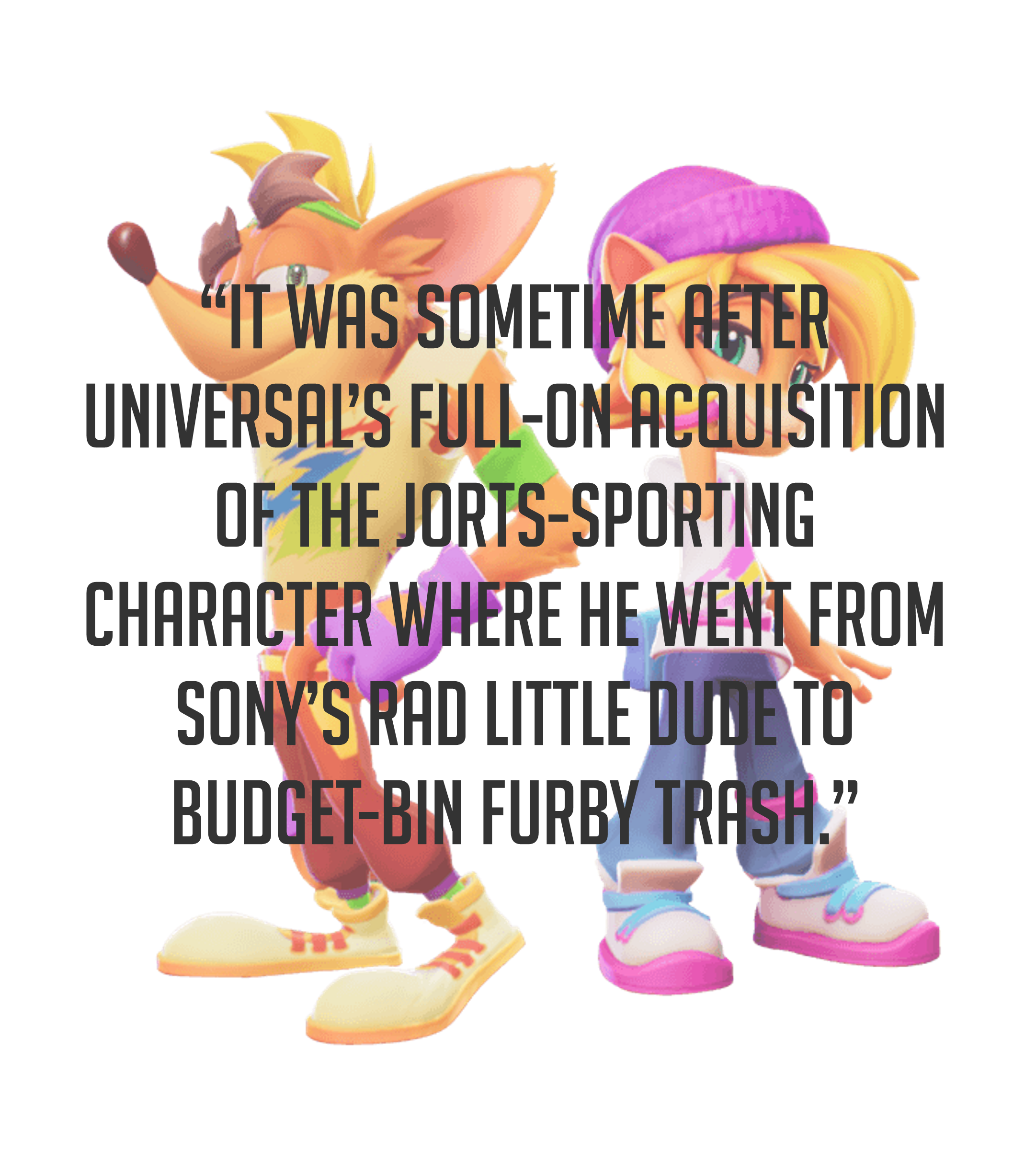 While I’m sure I could start the review with the important stuff like the Gameplay or Controls, I figured I go with the visuals, or rather, an aspect of the visuals that’s been mishandled for over twenty years until now—the style.
While I’m sure I could start the review with the important stuff like the Gameplay or Controls, I figured I go with the visuals, or rather, an aspect of the visuals that’s been mishandled for over twenty years until now—the style.
The Bandicoot’s trademark flair may be a bit dated, and even cringy to a few, the reception to his edgy look helped escalate the standard of “’Tude” that Sonic had set before him. It was sometime after Universal’s full-on acquisition of the Jorts-sporting character where he went from Sony’s rad little dude to Budget-bin Furby trash. The redesigns of the character were the first sign that the Crash Bandicoot property was misunderstood on the most fundamental levels of his appeal. Sure, there was that one instance where the art design took a lot of inspiration from Bob Camp’s work in Ren & Stimpy in Crash Twinsanity, and admittedly, it was a refreshing take on the little guy, but everything else has just fallen flat on its face. Not until the N-Sane Trilogy did we get the chance to see a subtle High Definition revision to his 32-bit design, and more of what made the little guy so likable in the first place.
Toys for BoB took that momentum though, and found a way to make Crash look fresher, without any compromise the charm of the original design that Vicarious Visions had carefully rebooted. From the warmer tones to his color, to the refined touchups to his fur and pants, the look of It’s About Time pulls off the fresh coat of paint it applies without saturating the old zing it’s trying to commemorate.
The art direction is all fine and good, but what about the promise of bringing back more of the Hop’n Bop formula from the Naughty Dog days? It’s more than safe to say that Crash 4 does a bang-up job of making sure it has something for everyone to enjoy.
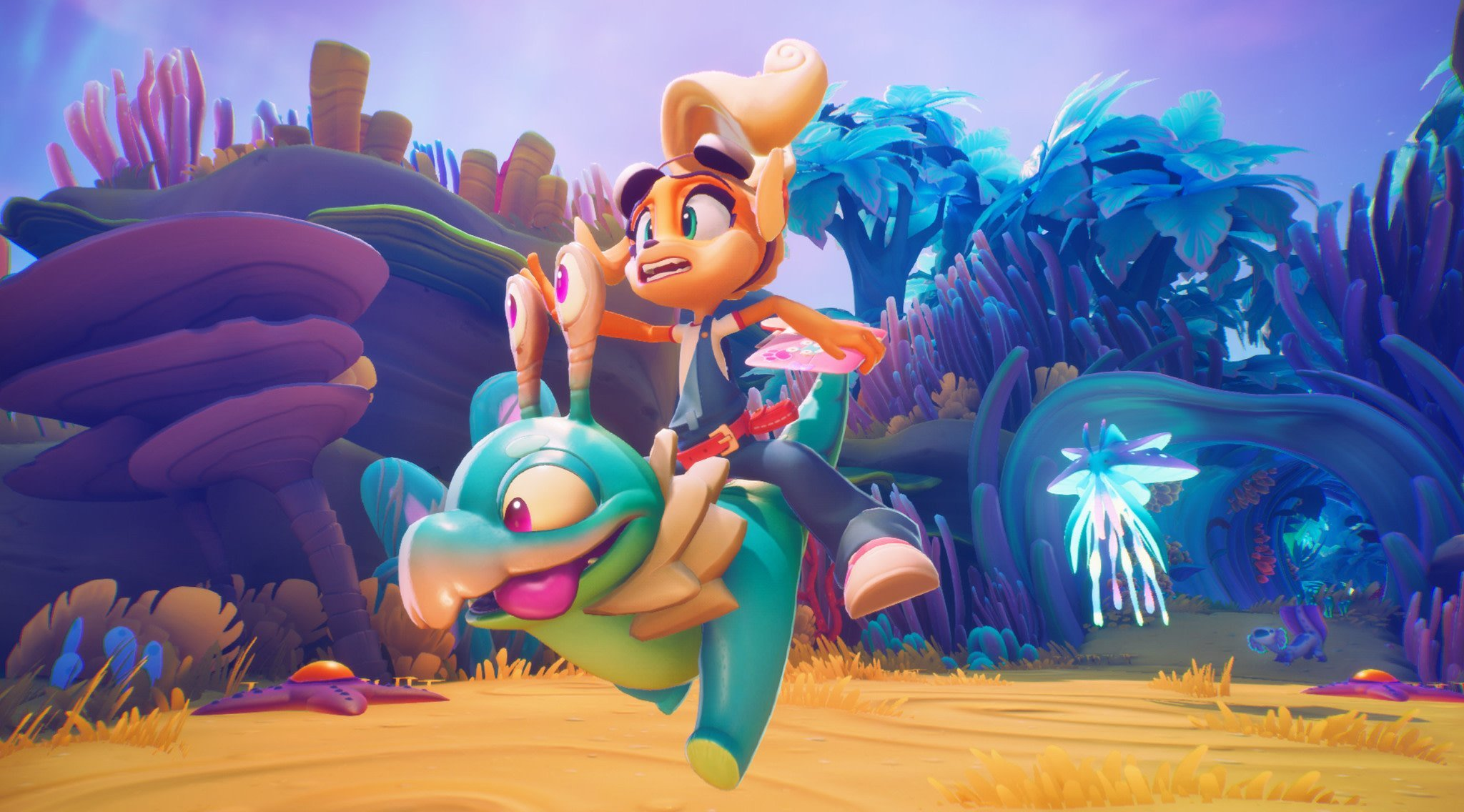
One of the perils behind staying faithful to the PlayStation era of games is delivering a sadistically difficult, yet rewarding challenge to the gameplay, because while fans came for the style, they stayed for the punishment, err I mean substance, yeah that’s what I meant. It’s About Time is able to balance out this desire without alienating new players by pacing out the challenge through new modes and options to customize the experience. The first feature is the Modern/Retro setting. Modern allows the players the option either to restart at the checkpoint no matter how many times they die, versus choosing Retro, which will start the player with limited lives instead, with a Game Over that will boot them back to the start of the level if they waste all of their chances in the run.
The flexibility doesn’t stop there though, as the series has always rooted itself in collectibles and trials for completion, there are rewards for playing through a level without dying a single death, regardless of the mode you selected. This is just one of the many flourishes that Crash 4 offers to players of all skills or interests, allowing a range of accessibility for those who take satisfaction in reaching the end of the level in one piece versus getting there with all of the Wumpa Fruit, Relics, and Gems in tow.
The innovation doesn’t stop there as Crash 4 introduces the options to wildly distort the dynamics of every level on the map with the new N. Verted level option. These alterations not only mirror the overall course layout, but also introduce a unique art direction to the level that can distort the way the level can be navigated. The first level for example drapes the stage in darkness, only illuminating when Crash uses his Spin Attack, sending out a sonar-like reaction that lights the stage up for a few seconds at a time as if it were a form of echolocation. This bizarre requisite makes it vital to constantly spin and smash everything in the area just to get a visual of the level before it starts to go black again. Another level will slightly speed up the gameplay, completely changing your reaction times, all while limiting the draw distance of the stage where platforms and obstacles aren’t rendered in your field of view as they normally would be. If that weren’t enough zaniness, imagine this all happening with a Sepia-toned, grainy filter on the graphics with ragtime music hammering away to make the whole thing feel like one big Buster Keaton bit.
From a more traditional standpoint, the developers did introduce new mechanics to the fundamental formula of Crash Bandicoot’s platforming. The biggest addition is the new Masks that introduce a variety of abilities, like a Tasmanian Devil-like spin that will infinitely propel the bandicoot with a beefier attack and added airtime to his jumps, or a mask that will phase different objects out of existence with one another, similar to the polarity mechanics of Treasure’s iconic Shoot’em up, Ikaruga. The new facial-wear wonderfully shakes up the flow without distorting the follow-through. Some other neat touches are the smother physics behind momentum and jumping. Gone are the blind jumps, and refrigerator-on-roller-skates traction that hurt N.Sane Trilogy, as moving the furry siblings feels just as sharp as the Naughty Dog games did. The developers even threw in a permanent Drop-Shadow under your feet to help with all the tricky depth issues that derive from the franchise’s unique camera perspective. The other additions however aren’t as organic. Taking it back to the early Aughts, the Sneaker-clad Marsupial can now swing on vines, grind on railways, and run on walls found throughout various stages in his adventure. The potential is certainly there, sure, but the clumsy execution of these moments (especially that damn finicky-ass wall run) are low points of the experience, and easily where the gameplay loses its way in it all—Crash should just leave the parkour to Sonic and stick with what he’s good at.
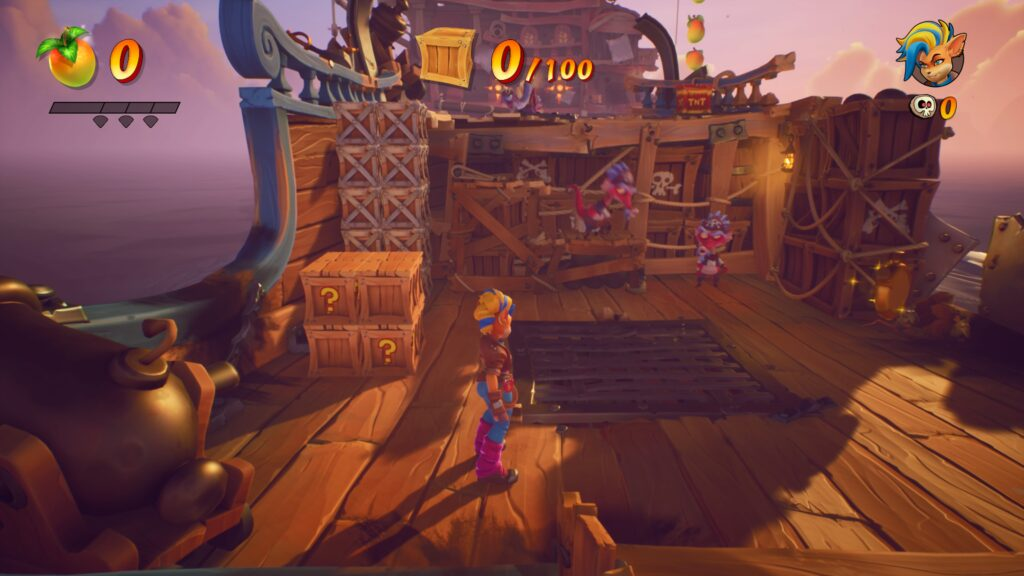
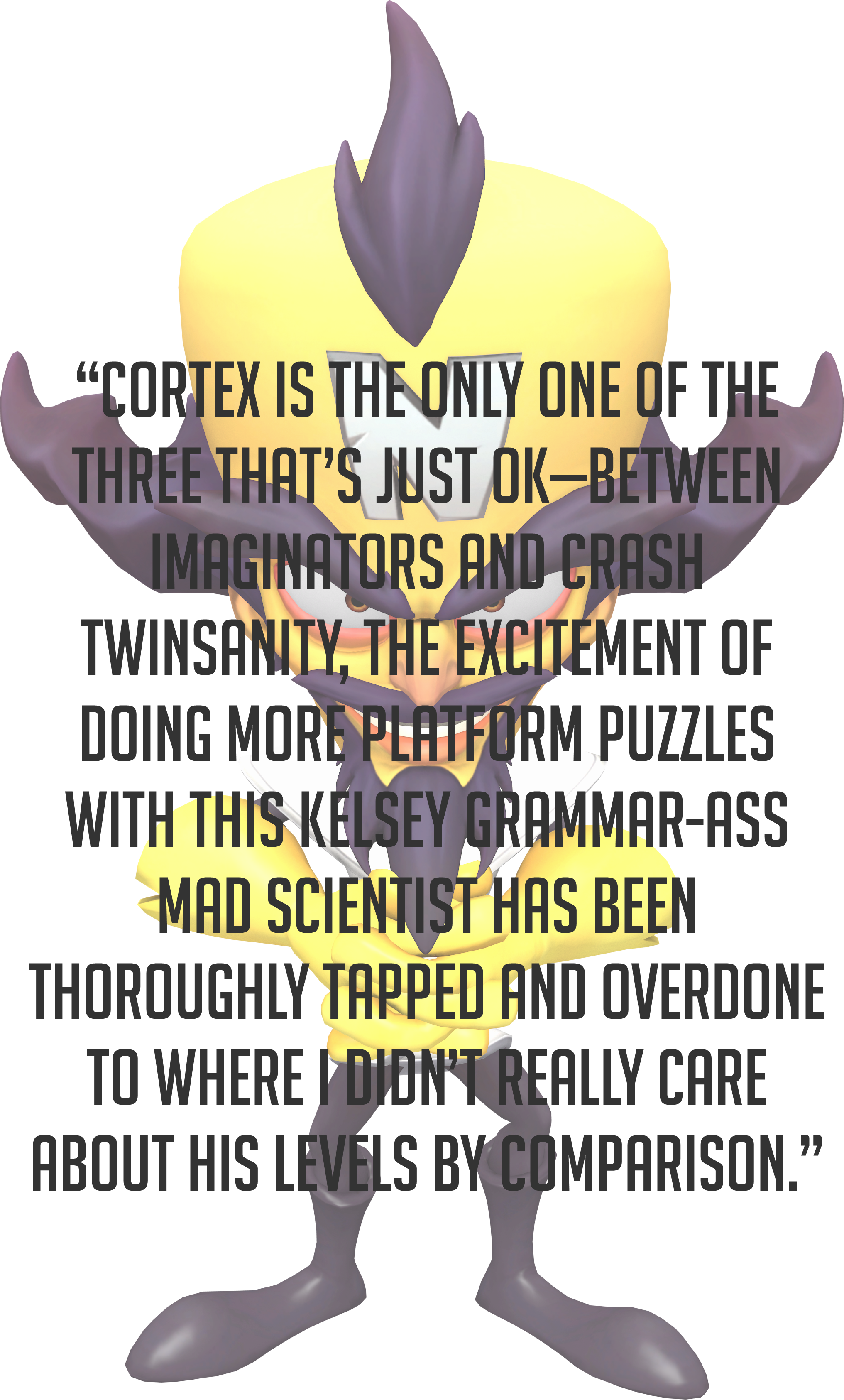 Speaking of experimenting with stuff a certain Blue Hedgehog has already done, It’s About Time adds more playable characters to the mix too, yet Toys For BoB is able to make it work, which isn’t all that surprising with their experience putting together ensemble casts, what with their history with Skylanders and all. In addition to Crash and Coco, players will get to play special levels that star an alternate-universe take on Tawna, the hero’s love interest from the very first game, along with reformed-villain-turned-restauranteur Dingodile, and the Rhombus-headed antagonist himself, Dr. Neo Cortex. All of the characters have their own little quirks that set them apart from the main action without delineating too far from the standard formula. Tawna is especially a blast to use with her “Hookshot” ability, as it totally changes how you look at the level design and what she can latch to for secrets and shortcuts. Dingodile is neat but a little weird because while he vaguely resembles Crash’s physics, he also has his Vacuum gun for long-range attacks and jumping, which honestly feels like what would happen if Crash Bandicoot and Blinx the Time Sweeper had a dumpster baby. Cortex is the only one of the three that’s just OK—between Imaginators and Crash Twinsanity, the excitement of doing more platform puzzles with this Kelsey Grammar-ass mad scientist has been thoroughly tapped and overdone to where I didn’t really care about his levels by comparison.
Speaking of experimenting with stuff a certain Blue Hedgehog has already done, It’s About Time adds more playable characters to the mix too, yet Toys For BoB is able to make it work, which isn’t all that surprising with their experience putting together ensemble casts, what with their history with Skylanders and all. In addition to Crash and Coco, players will get to play special levels that star an alternate-universe take on Tawna, the hero’s love interest from the very first game, along with reformed-villain-turned-restauranteur Dingodile, and the Rhombus-headed antagonist himself, Dr. Neo Cortex. All of the characters have their own little quirks that set them apart from the main action without delineating too far from the standard formula. Tawna is especially a blast to use with her “Hookshot” ability, as it totally changes how you look at the level design and what she can latch to for secrets and shortcuts. Dingodile is neat but a little weird because while he vaguely resembles Crash’s physics, he also has his Vacuum gun for long-range attacks and jumping, which honestly feels like what would happen if Crash Bandicoot and Blinx the Time Sweeper had a dumpster baby. Cortex is the only one of the three that’s just OK—between Imaginators and Crash Twinsanity, the excitement of doing more platform puzzles with this Kelsey Grammar-ass mad scientist has been thoroughly tapped and overdone to where I didn’t really care about his levels by comparison.
The beauty behind all of these different gimmicks and options is that they’re all hinged at the pace of the player instead of the other way around. Whenever with collecting something in one stage, I decided to blow some steam off in a completely different level, be it an N.Verted stage or one of the other new playable characters. Sometimes all it took was to dress Crash or Coco up in some wacky new outfit because It’s About Time is great about leaving you to your own devices. Crash Bandicoot may not be the system-seller he used to be, but he’s still got plenty of gas in the tank and there’s no finer example than Crash 4.





 GeorgieBoysAXE
GeorgieBoysAXE




